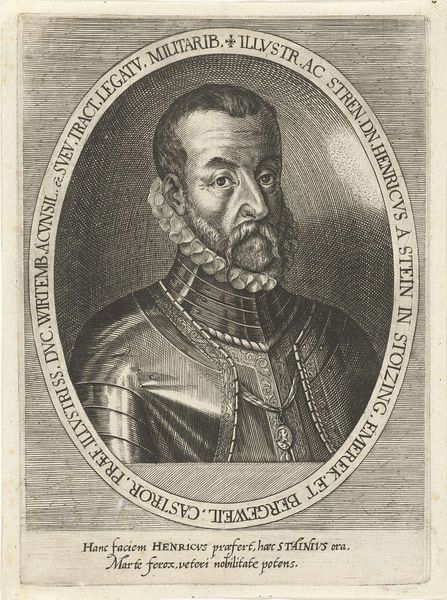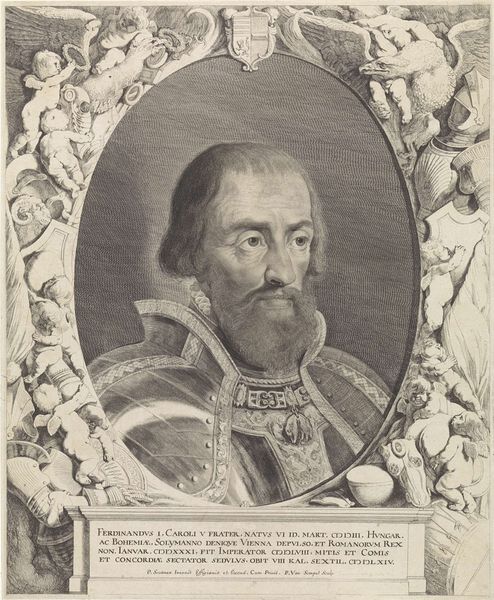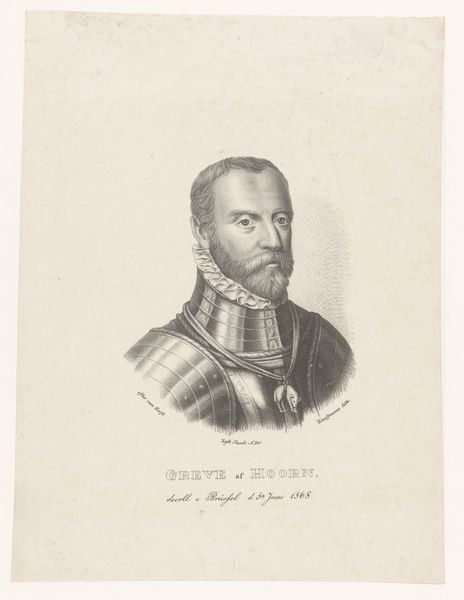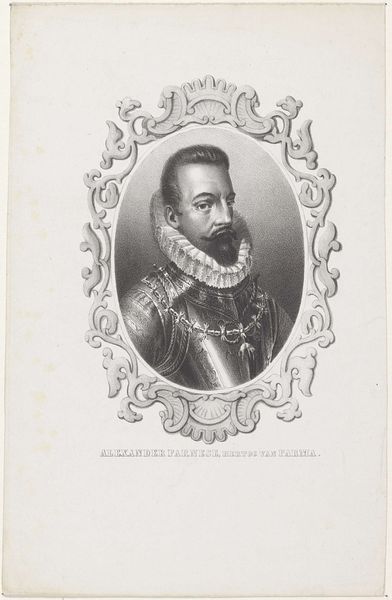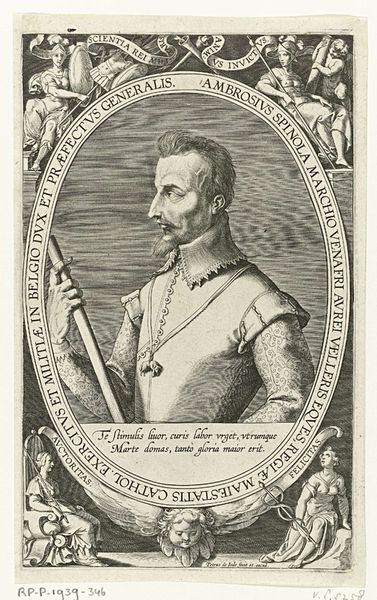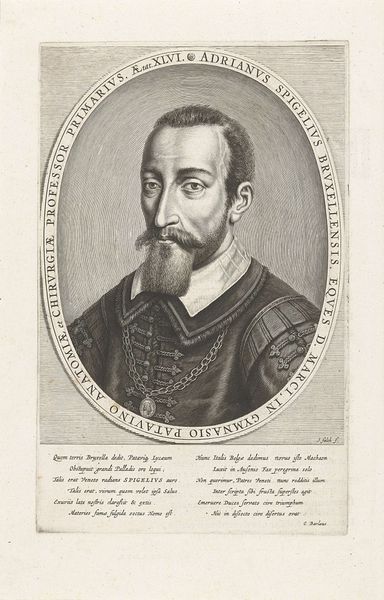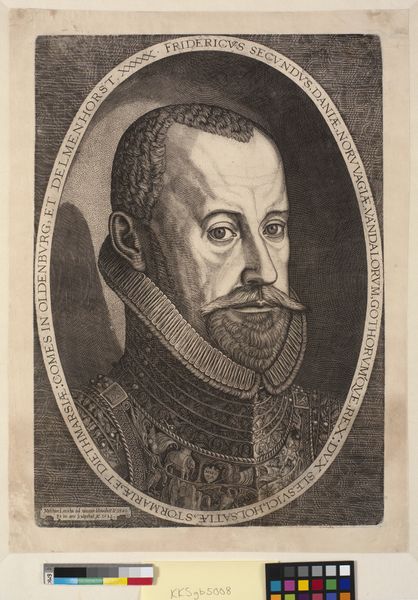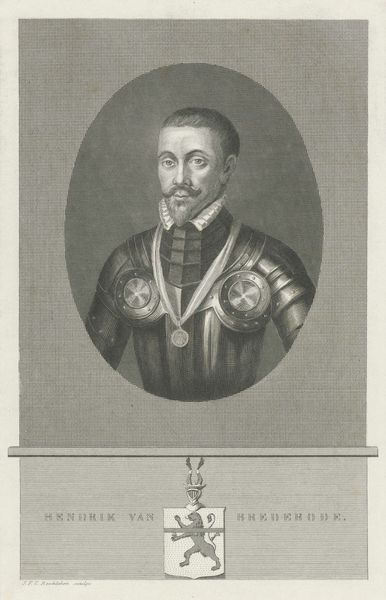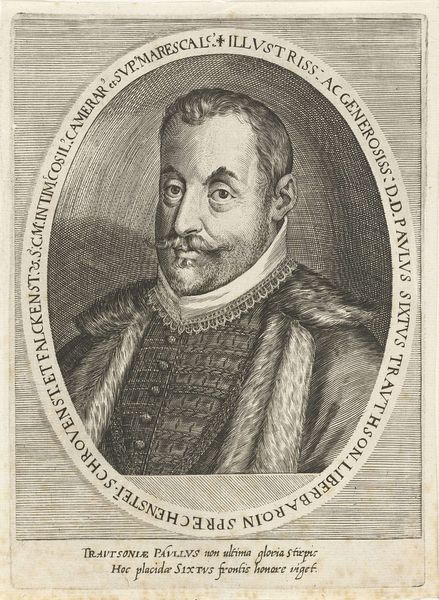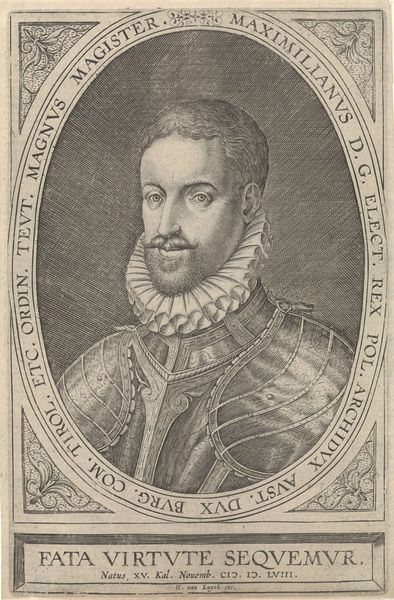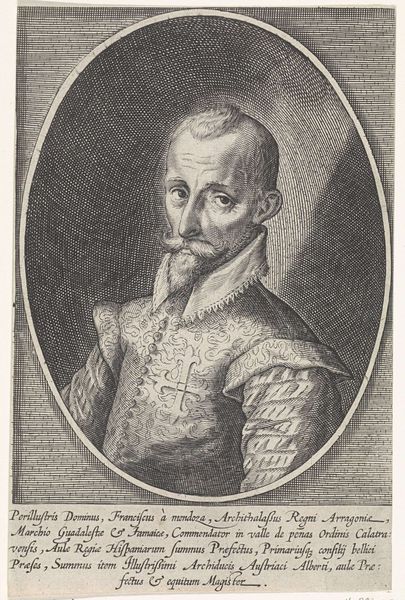
engraving
#
portrait
#
baroque
#
old engraving style
#
portrait drawing
#
history-painting
#
engraving
Dimensions: height 412 mm, width 277 mm
Copyright: Rijks Museum: Open Domain
Editor: So here we have Jonas Suyderhoef’s engraving, "Portret van Karel V van Habsburg," created sometime between 1644 and 1650. The detail achieved through the engraving technique is striking, especially given the context of its making. What are your thoughts on the materiality and production of this piece? Curator: I think it's essential to consider how the means of production here – the engraver's skill, the tools, and the printing process itself – shaped the final image and its reception. Engravings, unlike unique paintings, were designed for reproduction and dissemination. What do you think this availability says about Suyderhoef's role versus, say, a court painter? Editor: That's a great point. Perhaps it positions him less as a direct servant of the crown, and more as an independent artisan responding to a broader market interested in the image of Charles V. Does the Baroque style emphasize or undermine the material reality? Curator: I believe the ornate, dramatic flair typical of Baroque often draws attention *to* the materials and the virtuosity of the maker. Look at the intricate details of the framing elements, the way he simulates texture and depth using only lines etched into metal. Think of the labor and skill required! Are these symbols of status highlighting Suyderhoef's talent and accessing luxury consumers, or venerating Karel? Editor: I never thought about it in terms of skilled labor and status. Considering the political context, it might subtly legitimize Charles V’s legacy through sheer artistic and productive power. It’s no longer just an image; it is work, disseminated! Curator: Precisely. The very act of making and distributing this engraving becomes a statement about power and influence that extends beyond the subject's royal status. I have a renewed perspective. Editor: Agreed! Analyzing it through a material lens definitely brings new depth. I will think about the historical implications differently now.
Comments
No comments
Be the first to comment and join the conversation on the ultimate creative platform.

